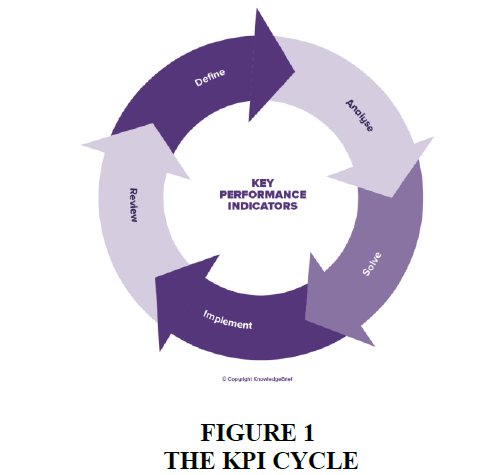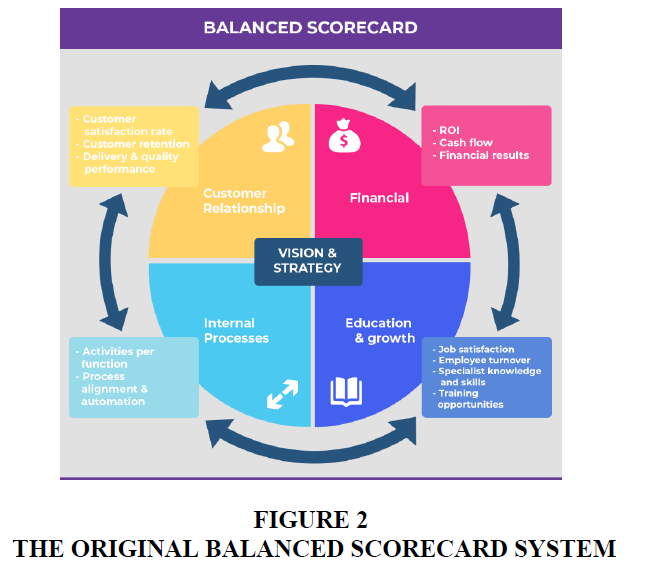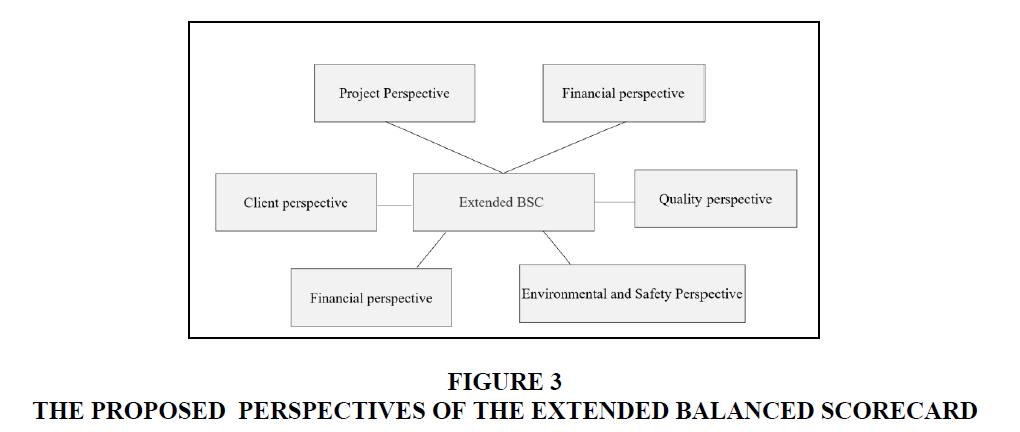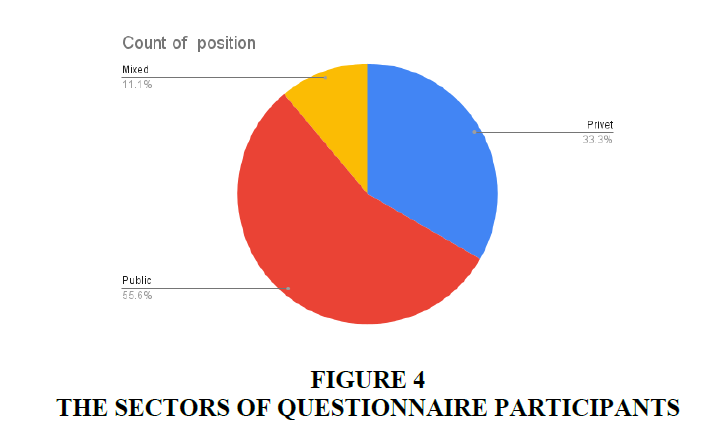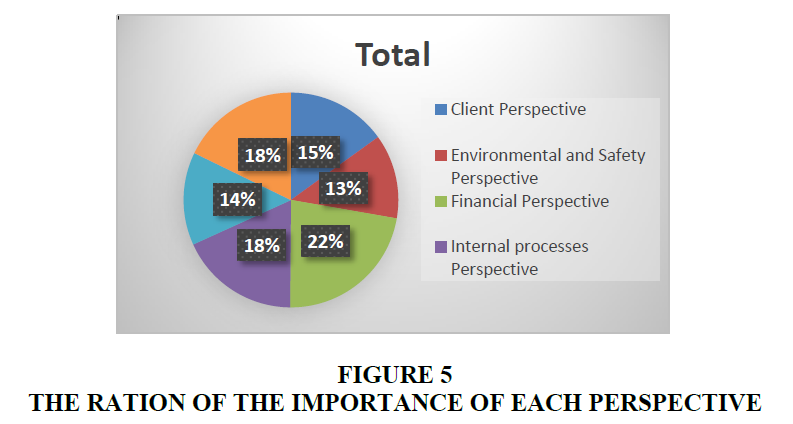Research Article: 2022 Vol: 25 Issue: 5
Extended balanced scorecard approach for evaluating the performance of Iraqi construction companies
Ibrahim Fadhil Muhsina, University of Baghdad
Zaid Khalid Nory, University of Baghdad
Citation Information: Muhsina, I.F., & Nory, Z.K. (2022). Extended balanced scorecard approach for evaluating the performance of Iraqi construction companies. Journal of Management Information and Decision Sciences, 25(S7), 1-10.
Abstract
Construction companies always aim for the successful outcome of construction projects. Time and cost are areas of performance recognized by most researchers. However, there are other non-financial performance perspectives that are important in managing modern projects. This paper aims to determine the applicable performance perspectives for Iraqi construction companies and the most fitting key performance indicators for measuring the success of the company. A comprehensive literature review was implemented to conclude a list of performance perspectives that affect project performance. A survey instrument was designed for gathering the data and opinions from industry professionals in the Iraqi construction industry. The collected data was analyzed and ranked using the Relative Important Index approach. The results showed 6 performance perspectives for project performance namely, financial, customer perspective; quality perspective; project perspective, internal processes, and environmental and safety perspective, also twenty-eight different key performance inductors and metrics were chosen. The results of this paper can serve as guidelines in designing a model for evaluating the performance of Iraqi construction companies, therefore, improving project performance.
Keywords
Performance Evaluation; Key Performance Indicators; Balance Scorecard.
Introduction
The measurement of performance is crucial for senior management responsible for strategic decision-making and operations in general.
Consequently, numerous contemporary performance measurement and management (CPMM frameworks such as the Balanced Scorecard (BSC) were developed and diffused over the years to evaluate organizations’ performance (Denisi & Murphy, 2017).
The Balanced Scorecard (BSC) is a performance management tool developed in 1992 by Professor Robert Kaplan from Harvard Business School and David Norton, President of Renaissance Solution (Adhiprasanggaa et al., 2016).
The core of the BSC is the measures linking the four outlooks in a causal chain that passes through all four perspectives. Thus, Kaplan and Norton (1996) emphasized that non-financial strategic objectives should not comprise an arbitrary group of measures; instead, they should involve a balanced demonstration of financial and non-financial measures (Janudin et al., 2019).
Implementation of BSC for Performance Management in the construction sector can be seen from the early 1990s. The construction industry also has come forward to implement the BSC approach and a lot of research has been conducted during the last two decades (Kagioglou et al., 2001). yet in Iraq, no realistic methods were undertaken. Financial metrics such as profitability are used to judge how successful the project is (Hany Abd Elshakour et al., 2013).
The majority of Iraqs’ construction organizations adopt traditional evaluating methods (Tofan & Breesam, 2018) which rely exclusively on financial and time measures to determine the success of the projects Internationally, the traditional (financial) performance management systems were criticized because they are based on lagging indicators (Yorio et al., 2020) that are not adequate; as they give information about the past and they are not cooperative to present information about sources, ranges, and responsibility in case the project succeeded or failed to support decision making and direct future performance.
Internationally a multi-criteria assessment model based on key performance indicators has been adopted for the construction industry since 2012 (Khalilzadeh et al., 2020) yet no clear implementation for the BSC has been put to use in Iraq.
The aim of this paper, which is part of a larger research, is to determine the applicable performance perspectives for Iraqi construction companies and the most fitting key performance indicators for measuring the success of the company based on multi-criteria perspectives.
Literature Review
Bekr (2017) concluded in his study that in Iraq, there are many construction projects that fail in performance. Moreover, performance measurement systems are not effective or efficient in overcoming this problem. Many built projects fail in time performance, some fail in cost performance, and some fail in other performance metrics. Over the past 10 years, many projects have performed poorly due to many evidential reasons such as safety issues, customer impediments, unavailability of materials, road closures, amendment of the design and drawing, additional works, waiting for the decision, handing over, variation order, amendments in Bill of Quantity (B.O.Q) and delay of receiving drawings as mentioned by (Alshammari, 2011). Over the last two decades, a series of industries, mainly production, have introduced new methods and techniques to move traditional paradigms to improve their performance. This has led to the creation of new philosophies such as concurrent engineering/construction, lean production or construction, and many others such as just-in-time (JIT), Total Quality Management (TQM), Total Quality Management (TPM), etc. The main driver behind those philosophies is to optimize an organization’s performance both internally and externally within its respective marketplace. Inevitably, this has led to the „rethinking? of performance management systems through effective performance measurement. There are alternative indicators for performance issues in the Republic of Iraq that value project management, coordination among participants, monitoring and feedback, and leadership skills. Also, Janudin et al. (2019) mentioned that political, economic, and cultural problems are 3 vital indicators concerning failures of projects’ performance in Iraq.
Performance Measurement Systems
Performance measurement is the process of calculating the efficiency and effectiveness of actions emphasized that “Financial measures are useful, but tend to measure the past tend to measure easily measurable”. As a result, there is a systematic displacement of the emphasis on financial performance measures to non-financial measures. Traditional financial and accounting performance measures aren't sufficiently capable to assess business performance (Janudin et al., 2019). So, from this systematic shift-financial measure to non-financial measure, there is one tool in performance management that does not only contain financial measure, named Balanced Scorecard.
Key Performance Indicators
Key performance refers to a set of quantifiable measurements used to gauge a company’s overall long-term performance. In other words, they are tools used to track project performance and report to project shareholders. therefore, highlighting organizational weakness and set to improve performance. The information gained from KPIs provides a platform for future strategies (Madushika et al., 2020).
Figure 1 presents the KPI cycle, fulfillment of this cycle ensure that the success ratio of the organization will substantially increase.
Balanced Scorecard
Balanced Scorecard (BSC) is a performance management tool designed by Harvard business school professor Robert Kaplan and Renaissance Solution president David Norton in 1992. It is containing three more measurement perspectives besides financial; they are customer perspective; internal/business process perspective; learning and growth perspective. Each perspective includes a wide range of potential sub-measures (Kagioglou et al., 2001). BSC can be used as a tool to measure the performance of a construction company. For measuring the performance of construction companies, there are also Key Performance Indicators (KPI). KPIs are a compilation of data measures used to evaluate the performance of a construction operation. Besides, “KPIs play a key role in providing information on the performance of construction tasks, projects, and companies”. Thus, the use of the KPIs in construction is a reflection of the growing need to focus on a range of quality and performance issues (Adhiprasanggaa et al., 2016). Previous studies have proven that the BSC method is suitable for construction companies, however, that it is essential for a few particular characteristics of the construction industry to be taken into consideration with the intention to make its utility more efficient and smoother (Mbachu, 2008).
BSC affords opportunities to motivate organizational members to Achieve Reviews their goals that support the long-term vision. By long-term strategic objectives with short-term actions, BSC plays an important role in integrating strategic management systems.
Research Methodology
A comprehensive literature review was conducted to investigate Performance Management System (PMS) in general and in construction to appraise the development of the conceptual framework.
The data (information) were obtained from individuals working in the Iraqi construction sector through a randomly distributed open-ended questionnaire.
Then the sample responses were processed and analyzed by using IBM Statistical Package for the Social Sciences (SPSS). The purpose of this analysis is to identify the condition of the sample and the behaviors of the construction environment. From the literature reviews, the questionnaire results, and all the conducted interviews with experts in the construction sector. The proposed extended BSC model is presented in Figure 2.
BSC was selected as a performance management framework because it is more suitable for projects than European Foundation for Quality Management Specific, (EFQM) which involves the whole company (Nassar & Hegab, 2009). This research clarifies and discusses the key elements of the model including perspectives, KPIs, and practical steps that apply to construction organizations.
Finally, for the purpose of ranking the perspectives, the relative importance index was calculated.
Research Process
The main phases include:
1. Identification of the extended BSCs perspectives for Iraqi construction projects.
2. Identification of KPIs for Iraqi construction projects.
3. Proposing evaluating a model for Iraqi construction projects.
A literature review is conducted to identify the factors that impact the performance of the construction organizations. Factors shortlisted from the literature review will be analyzed for their impact on the performance.
Identification of the Extended BSCs Perspectives
Today's construction projects are severely affected by the project team and health, safety, and environmental factors. Therefore, the traditional balanced scorecard should be extended to include other perspectives in the health, safety, and environmental fields, such as project team and performance. In addition, in the original BSC, the customer perspective has been renamed to "customer perspective" to reflect the construction sector. Figure 3 summarizes the chosen balanced scorecard perspective.
Determination Extended BSC's Key Overall Performance Indicators for the Project
An initial survey was executed thru informal interviews with the intention to revise the conceptual extended BSC model, with the purpose of collecting common KPIs, that are relevant in construction project overall performance evaluation. Preliminary interview data analysis exhibits that each one extended BSC perspectives and KPIs are relevant for every perspective withinside the extended BSC model and the perspectives identified are applicable for constructing project overall performance evaluation. Moreover, From all the previous studies and conducted interviews with experts six prospects have been chosen and 28 KPIs for the proposed evaluating model.
Data Collection
The open ended-questionnaire approach is used for collecting the data. The questionary was randomly distributed to Iraqi construction companies. the distribution of the questionnaire was throughout using (Web-based questionnaire) to ensure better reach for Persons specialized in the construction sector.
The Targeted Sample of the Questionnaire
The research sample consists of project managers, consultants, administrators, chief executive officers, human resources officers, and engineers from wide-ranging specialties occupying various positions in both the public and the private Iraqi construction sector.
Questionnaire Design
The questionnaire is divided into four parts, the first part includes general information about the participants and the organizations occupied by them. The second part inquired about the participant knowledge of the performance measurements techniques and methods and their use enter participants’ organization. finally, the third part included questions about the proposed balance scorecard perspective, metrics, and KPIsTo identify the relative statical wight of the performance indicators for the construction organizations in Iraq, a questionnaire was designed to collect the data from Iraqi construction companies in both the private sector and public. This questionnaire was submitted to a group of seven experts in the academic field with actual working experience and received a degree of agreement of 87%. The questionnaire achieved 0.93 value of Guttman split-half Reliability coefficient, and this means high stability of the questionnaire.
Research Analysis
Based on the Likert 5-point scale used in the questionnaire, the mean and standard deviation of the performance system of measurement was determined for all the responses from the questionnaire.
In order to calculate the relative weights for each KPI / measure, the Relative Importance Index RII was used for each of the indicators and ranked accordingly as it is the best way to measure the central tendency for ordinal data according to the below equation (Rooshdi et al., 2018).

Where,
W= The weighting given to each factor by the respondents (ranging from 1 to 5)
A= The highest weight (i.e. 5 in this case)
N= The total number of respondents
Findings and Discussion
The data were gathered from 67 individuals occupying positions in the Iraqi construction sector. More than 55% of all of them are working in the public sector the following chart summarizes the percentages.
Only 42% of them have any knowledge about the modern methods of measuring the performance (KPI, balance scorecard, etc..). this indicates a lack of performance evaluation and the Iraqi construction organizations in the public sector (Figure 4).
Using MS Excel spreadsheet and SPSS software to perform statistical analysis on the data collected from the questionnaire. The relative importance of each KPI is listed in descending order in Table 1 below.
Table 1 shows that profitability is the most important indicator for most companies with relative importance equal to 0.836 likewise to (Tofan & Breesam, 2018) research findings in the Iraqi public-owned construction companies.
| Table 1 Relative Importance Index of The KPIS | ||
| KPI | RII | Perspective |
| Profitability | 0.836 | Financial Perspective |
| Project Cost | 0.793 | Financial Perspective |
| Net present value | 0.779 | Financial Perspective |
| Number of site inspections conducted | 0.779 | Quality Perspective |
| Client satisfaction of on time completion Client requirements and assistance | 0.771 | Client Perspective |
| Client requirements and assistance | 0.771 | Client Perspective |
| Monthly Overhead Burn Rate | 0.771 | Financial Perspective |
| Speed ??of response and implementation | 0.764 | Internal processes Perspective |
| Client satisfaction on meeting budget | 0.764 | Client Perspective |
| Client satisfaction for quality Level | 0.757 | Client Perspective |
| Productivity | 0.757 | Internal processes Perspective |
| Planning effectiveness | 0.743 | Internal processes Perspective |
| Number of defects | 0.736 | Quality Perspective |
| Time variation | 0.736 | Project Perspective |
| Earned Value Management | 0.736 | Internal processes Perspective |
| The planned time for project construction | 0.721 | Project Perspective |
| Ratio of the number of inspection passed to total number of inspection | 0.714 | Quality Perspective |
| Time to rectify defects | 0.714 | Quality Perspective |
| Project Cashflow | 0.714 | Financial Perspective |
| Project design cost | 0.700 | Project Perspective |
| Percentage net variation over the final cost | 0.693 | Project Perspective |
| Cycle time to fulfill and order | 0.679 | Internal processes Perspective |
| Number of defects due to workmanship | 0.679 | Quality Perspective |
| No. of socio-environmental complaints | 0.671 | Environmental and Safety Perspective |
| Average delay in payment from owner to contractor | 0.664 | Financial Perspective |
| [Reportable accidents rate in the project] | 0.650 | Environmental and Safety Perspective |
| Level of construction waste and sustainability | 0.636 | Environmental and Safety Perspective |
| environmental impacts of the project | 0.629 | Environmental and Safety Perspective |
Although the top three ranked KPI is in the financial perspective yet it is not possible to rely on just one aspect of the performance evaluation of construction companies. The results also showed the lack of financial indicators to express the company's performance or success. These metrics have an effect on every other, enhancing the Organization's competency in human resource management, and learning and growth perspective, this can result in progressed enterprise efficiency, the effectiveness of planning, safety, and on-time delivery indicators in the internal organization perspective. In turn, this could result in growth in the quality of service provided and customer satisfaction, therefore will enhance the financial indicators through increasing profitability, economic stability, and cash flow (Figure 5).
Conclusion
The study aspires to develop the construction companies’ performance evaluation guidelines. A three-phase approach has been established to evaluate the performance of a construction project using extended BSC. This is achieved by the use of comprehensive literature reviews to identify BSC concepts 28 KPIs were chosen in six prospective. Then the use of statistical analysis to identify and prioritize the assessments of BSC and KPIs for the purpose of building a project performance guideline. Furthermore, questionnaire results showed that 72% of the engineers are familiar with the concepts of KPI and BSc yet their companies still adopt the traditional evaluation approach.
The analysis of the questionnaire data revealed that the " client perspective" and the "financial perspective" have a higher priority in the construction of construction projects than the other perspectives in the revised extended BSC.
The developed construction project performance evaluation guideline here serves as a tool to enhance the performance of construction projects. It allows strategic decisions on client satisfaction, financial constancy, quality assurance, sustainable projects, and delivery of innovative projects to clients.
Finally, the Iraqi construction industry urgently needs a more practical performance evaluation system that includes non-financial metrics to be adopted.
Recommendations
Holding seminars and training sessions for the construction companies’ employees and administrators to expand the performance evaluation viewpoints and performance measurement methods, including the key performance and the use of the balanced scorecard system.
Adopting a more contemporary approach for the assessment of Iraqi construction companies than traditional methods.
Calculating the key performance indicators periodically based on the proposed perspectives, especially for the non-financials prospectives.
References
Adhiprasanggaa, A., Sarib, A.P., Putrac, T.W., & Wibisonod, D. (2016). Develop balanced scorecard from KPI in construction companies (Case study: Stated-owned enterprise). Asia Pacific Journal of Advanced Business and Social Studies, 2(2), 156-166.
Alshammari, A.M. (2011). The evaluation of the impact of using balanced scorecard on strategic performance in small and medium enterprises.
Bekr, G.A. (2017). Factors affecting performance of construction projects in unstable political and economic situations. ARPN Journal of Engineering and Applied Sciences, 12(19), 5384-5395.
DeNisi, A.S., & Murphy, K.R. (2017). Performance appraisal and performance management: 100 years of progress?. Journal of applied psychology, 102(3), 421.
Indexed at, Google Scholar, Crossref
Hany Abd Elshakour, M.A., Al-Sulaihi, I.A., & Al-Gahtani, K.S. (2013). Indicators for measuring performance of building construction companies in Kingdom of Saudi Arabia. Journal of King Saud University-Engineering Sciences, 25(2), 125-134.
Indexed at, Google Scholar, Crossref
Janudin, S.E., Halim, H.A., Habidin, N.F., & Hanif, F.M. (2019). Contemporary management accounting practices and managerial performance amongst the Malaysian co-operatives sector. Research in World Economy, 10(5), 129-138.
Indexed at, Google Scholar, Crossref
Kagioglou, M., Cooper, R., & Aouad, G. (2001). Performance management in construction: a conceptual framework. Construction management and economics, 19(1), 85-95.
Indexed at, Google Scholar, Crossref
Khalilzadeh, M., Balafshan, R., & Hafezalkotob, A. (2020). Multi-objective mathematical model based on fuzzy hybrid multi-criteria decision-making and FMEA approach for the risks of oil and gas projects. Journal of Engineering, Design and Technology.
Indexed at, Google Scholar, Crossref
Madushika, W.H.S., Perera, B.A.K.S., Ekanayake, B.J., & Shen, G.Q.P. (2020). Key performance indicators of value management in the Sri Lankan construction industry. International Journal of Construction Management, 20(2), 157-168.
Indexed at, Google Scholar, Crossref
Mbachu, J. (2008). Conceptual framework for the assessment of subcontractors' eligibility and performance in the construction industry. Construction Management and Economics, 26(5), 471-484.
Indexed at, Google Scholar, Crossref
Nassar, K., & Hegab, M. (2009). Evaluating contractor performance: Application to the Dubai construction industry. In 45th Conference, Florida, USA.
Rooshdi, R.R.R.M., Abd Majid, M.Z., Sahamir, S.R., & Ismail, N.A.A. (2018). Relative importance index of sustainable design and construction activities criteria for green highway. Chemical Engineering Transactions, 63, 151-156.
Indexed at, Google Scholar, Crossref
Tofan, A.S., & Breesam, H.K. (2018). Using the Fuzzy-AHP technique for determining the key performance indicators of public construction companies in Iraq. International Journal of Civil Engineering and Technology, 9(13), 1431-1445.
Yorio, P.L., Haas, E.J., Bell, J.L., Moore, S.M., & Greenawald, L.A. (2020). Lagging or leading? Exploring the temporal relationship among lagging indicators in mining establishments 2006–2017. Journal of Safety Research, 74, 179-185.
Indexed at, Google Scholar, Crossref
Received: 14-Apr-2022, Manuscript No. JMIDS-22-11758; Editor assigned: 19-Apr-2022, PreQC No. JMIDS-22-11758(PQ); Reviewed: 03-May-2022, QC No. JMIDS-22-11758; Revised: 16-May-2022, Manuscript No. JMIDS-22-11758(R); Published: 23-May-2022
